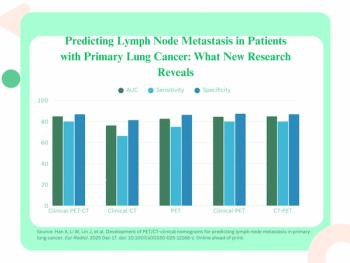
Breast MRI Background Parenchymal Enhancement May Indicate Neoadjuvant Chemotherapy Response
Nonsuppressed background parenchymal enhancement could indicate patients who will show inferior response and allow for a personalized redirection of treatment.
Breast magnetic resonance imaging (MRI) that shows a lack of background parenchymal enhancement (BPE) suppression may indicate inferior response to neoadjuvant chemotherapy primarily in patients with hormone receptor (HR)-positive breast cancer.
Writing in
This retrospective review included 3528 MRI scans from 882 women (mean age 48) who were treated for breast cancer by one of 10 drug arms between May 2010 and November 2016 in
the I-SPY 2 TRIAL. Patients underwent MRI at four points: before treatment, early treatment, inter-regimen and before surgery. BPE change from before treatment was defined as suppressed or nonsuppressed for each point. Researchers examined the relationship between BPE suppression and pathologic complete response in HR-positive and HR-negative cohorts.
In HR-positive patients, lack of BPE suppression was associated with lower pathologic complete response rate at the inter-regimen point: 11.8% compared with 28.9% for BPE suppressed (p = .02), and at the pre-surgery point: 5.3% versus 27.4%, respectively, (p = .003). BPE suppression was observed in both premenopausal women, 82% to 90% of the HR-positive cohort and 73% to 84% of the HR-negative cohort, and peri- or postmenopausal women, 62% to 73% of the HR-positive cohort and 72% to 77% of the HR-negative cohort.
In an accompanying
“The fact that BPE suppression was not significantly related to menopausal status suggests the effect is more than simply ovarian suppression,” Dr. Philpotts wrote. “The actual physiologic changes that alter BPE occurring with various chemotherapeutic treatments is an area that will need more investigation.”
“The data in this study contribute to the growing realization that differences among breast cancer subtypes and among individual women require an ever-increasing variety in treatment regimens,” Dr. Philpotts wrote. “Imaging has an increasingly important role in contributing to the better understanding and treatment of clinical breast cancer patient care.”
Newsletter
Stay at the forefront of radiology with the Diagnostic Imaging newsletter, delivering the latest news, clinical insights, and imaging advancements for today’s radiologists.




























